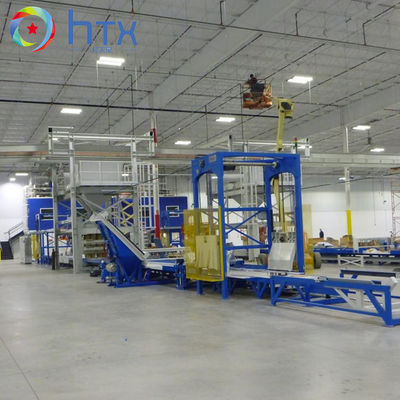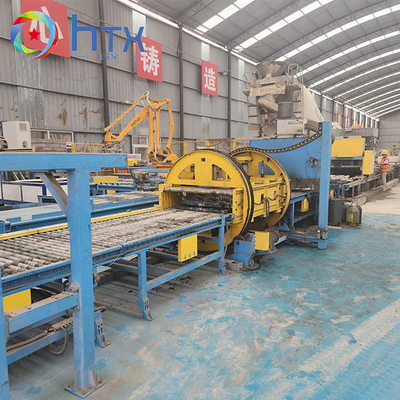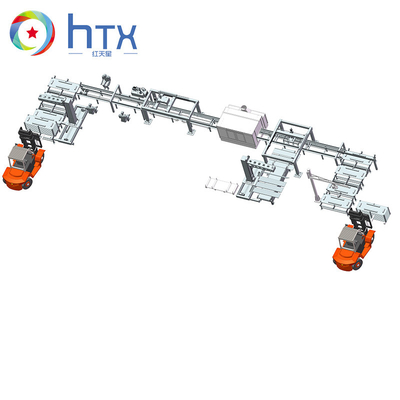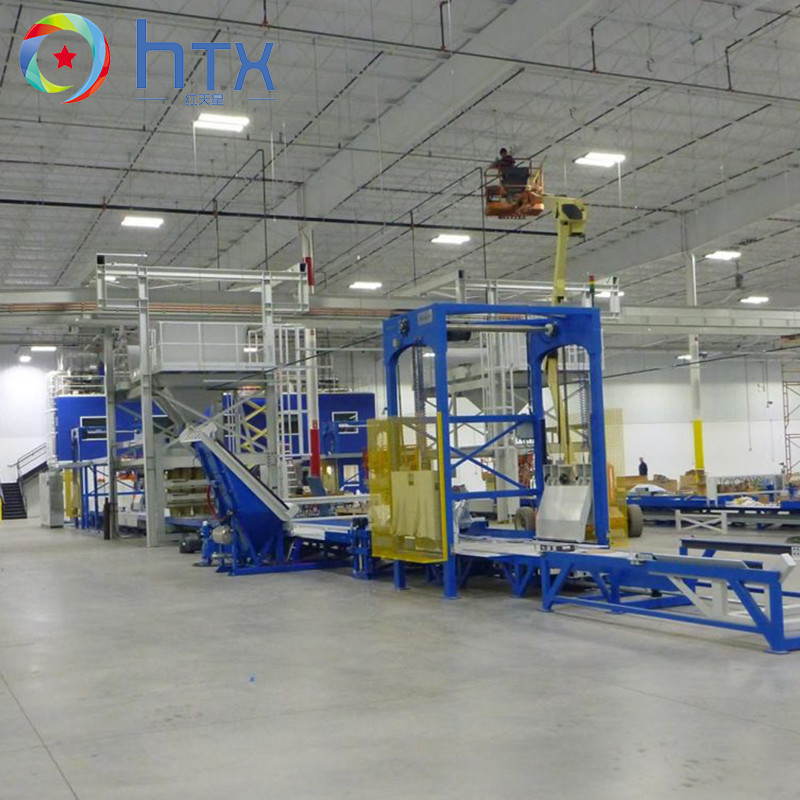High Efficiency Low Cost Concrete Wall Panels Making Machine Retaining Wall Block Machine
Product Details:
| Place of Origin: | China |
| Brand Name: | HTX |
| Certification: | POSI CERTIFICATE |
| Model Number: | HTX-P-01 |
Payment & Shipping Terms:
| Minimum Order Quantity: | 1Set |
|---|---|
| Price: | 40000-200000/USD |
| Packaging Details: | Carton |
| Delivery Time: | 30Days |
| Payment Terms: | L/C, D/A, D/P, T/T, Western Union, MoneyGram |
| Supply Ability: | 50Sets/Month |
|
Detail Information |
|||
| Product Name: | Retaining Wall Block Machine | Capacity: | 1200-1500m2 |
|---|---|---|---|
| Power: | 12.7 KW | Advantage: | Multi Function Wet Casting Doser Machine Production Line |
| Brick Type: | Concrete Dosing System | Application: | Buliding Construction |
| Highlight: | automatic fence panel machine,fence panel making machine,panel master fencing machine |
||
Product Description
High Efficiency Low Cost Concrete Wall Panels Making Machine Retaining Wall Block Machine
Retaining wall block machine, also known as a retaining wall block making machine, is a specialized piece of equipment used for the automated production of concrete retaining wall blocks. These machines are designed to efficiently manufacture retaining wall blocks of various sizes, shapes, and designs, which are used to construct sturdy and durable retaining walls for landscaping, erosion control, and structural purposes.
Here's a general overview of how a retaining wall block machine works:
1.Concrete Batching Plant: The retaining wall block machine is typically connected to a concrete batching plant or mixer. The batching plant accurately measures and combines cement, aggregates (such as sand and gravel), water, and additives to create the concrete mixture. The quality and consistency of the concrete mix are crucial for producing strong and reliable retaining wall blocks.
2.Mold Preparation: The machine is equipped with molds or formwork that define the shape and dimensions of the retaining wall blocks. These molds can be customized to produce different block sizes, textures, and patterns. The molds are prepared by cleaning, applying release agents, and ensuring they are in proper condition for efficient block production.
3.Concrete Feeding: The concrete mixture from the batching plant is fed into the retaining wall block machine. The machine may have a conveyor system or other mechanisms to transport the concrete to the mold or formwork.
4.Vibration and Compaction: Once the concrete is in the mold, the retaining wall block machine applies vibrations and compaction to ensure proper consolidation. Vibrations help remove air bubbles and ensure uniform distribution of the concrete mixture within the mold. Compaction ensures that the blocks have sufficient strength and density.
5.Curing: After compaction, the molds with the freshly formed retaining wall blocks are usually moved to a curing area. Curing is an essential step that allows the concrete to gain strength and develop its desired properties. The blocks may be covered or subjected to temperature and humidity control to optimize the curing conditions.
6.Demolding and Finishing: Once the retaining wall blocks have sufficiently cured and hardened, the molds are opened, and the finished blocks are demolded. The blocks may undergo additional processes, such as surface finishing or texturing, to achieve the desired appearance and functionality.
7.Quality Control and Packaging: Throughout the production process, quality control measures are implemented to ensure that the retaining wall blocks meet the required standards. This may involve inspecting dimensions, surface quality, and strength properties. After quality control checks, the blocks can be packaged and prepared for storage or transportation.
Retaining wall block machines can be fully automatic or semi-automatic, depending on the level of automation and the specific features of the machine. They are designed to optimize productivity, reduce labor requirements, and ensure consistent quality in retaining wall block production. These machines are widely used in landscaping, construction, and civil engineering projects.
Specification:
| Name | Model | Specification | Size(mm) | Power(Kw) | Capacity(m2/day) | Weight(Kg) |
| Wet Cast Machinery | HTX-P-01 |
Hydraulic driving;Auto feeding; vibrating and timing feeding |
7000*1000*1800 | 12.7 | 1000-1500 | 2000 |
| Wet Cast Machinery | HTX-P-02 | Chain drived;Auto feeding,auto vibration | 8000*1100*1600 | 4.05 | 800-1000 | 1500 |
![]()
![]()
![]()
Applications
Wet cast machinery, is suitable for different silicone molds, rubber molds and plastic molds, size range from 200*200mm to 1500*1500mm, available for producing the artificial stone both for paving tile molds, 3D wall molds, wall panel molds, roadside stone molds, retaining wall molds, wall cap molds, etc.
![]()
![]()
![]()
Support and Services
Wet Cast Machinery technical support and services include:
- On-site technical support and maintenance
- Expert assistance with installation and setup
- Remote and telephone troubleshooting and support
- Periodic maintenance and inspection
- Repair and replacement parts
- Technical training and user manuals
- Upgrades and software updates







